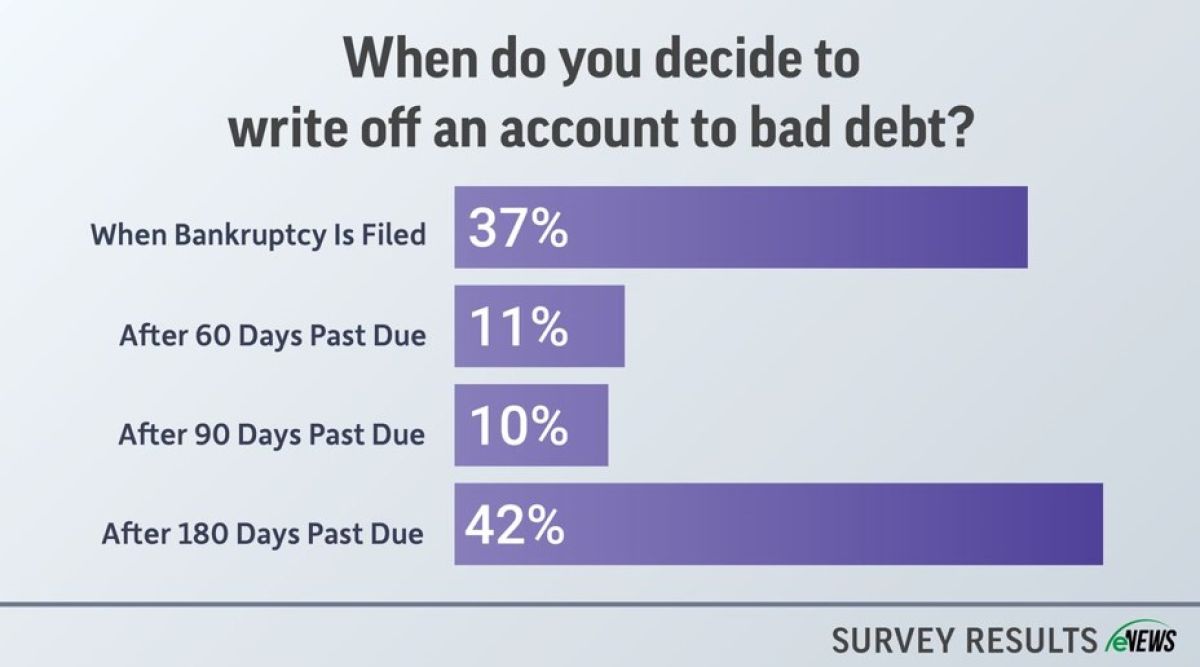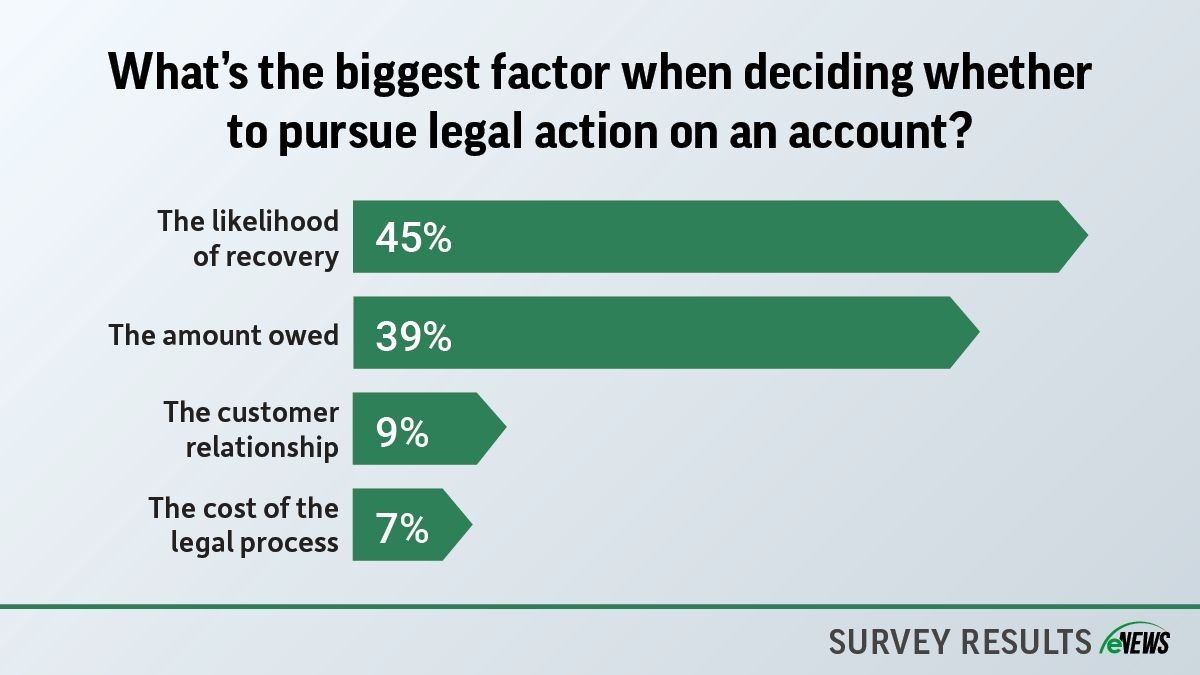Business Practices, eNews
When to write off bad debt

Deciding when to write off an account as bad debt is one of the most challenging calls that credit managers face.
Why it matters: Striking the balance between giving customers the benefit of the doubt and protecting your company’s bottom line requires both judgment and insight. Holding on to an overdue account too long can drain valuable time and resources, while writing off debt prematurely could mean missed opportunities to recover funds.
By the numbers: According to an eNews poll, 42% of credit managers write off bad debt after payment is 180 days past due. For others, the decision has less to do with the number of days and more so the customer themselves, with 37% of credit managers writing off debt when customers file for bankruptcy.
For Barry Hickman, senior director of credit at Dal-Tile Corporation (Dallas, TX), it all depends on whether that debt has been ruled uncollectible. His credit department writes off bad debt once a month, but they’re not looking at how far beyond terms the past due is, rather, they’re looking for indicators that the debt is uncollectible.
“When your debtor stops talking, stops answering the phone, no longer performs what they’ve committed to doing in terms of a workout or there’s a bankruptcy, those are generally the key indicators that we’ve got a non-performing debt, and it’s got to come off the books,” Hickman said.
Hickman’s credit department also combines writing off bad debt with sending accounts to a collection agency that can possibly recoup the cost. “It is our policy that every account deemed uncollectible goes to the collection agency,” Hickman said. “Everyone needs a good collection agency, and there are a lot of them out there. Creditors should turn loose those accounts and get them to an agency sooner rather than later, timing is everything.”
Many credit departments take a thorough approach to debt recovery, exhausting every possible step—from repeated outreach and flexible repayment plans to third-party collections—before considering a write-off as a last resort. “If we have followed all of the steps of our collection process which is contacting the customer, sending a demand letter and going through the lien process, at that point it becomes bad debt,” said Vimal Patel, CBF, director of credit at OneSource Distributers LLC (Oceanside, CA). “If we’ve done everything we can internally, externally and an attorney has done everything they can, or if a customer or entity filed for bankruptcy, then we consider that all bad debt because we’ve done everything we can.”
Patel and his department write off bad debt once a quarter, with debts below $10,000 that the company does not have a lien right on getting sent to a collection agency. At times, credit managers might be apprehensive to send an account to collections but when it comes to an uncollectible debt, it might be unavoidable.
“If there is a continued relationship happening between us and the customer, then we try to typically handle that in house and not even involve an attorney or collection agency,” Patel said. “But if there is no chance at all and we are essentially breaking up with this customer, then there is no hesitancy at all, we send them to collections.”
For Mary Anne Davenport, CICP, corporate director of credit and collections at Canam Steel Corporation (Point of Rocks, MD), their in-house credit team and counsel handle the bad debt, meaning they have not used an external collection agency in the last 28 years. Davenport’s team, like Hickman’s, looks for key indicators of uncollectible debt when determining when to write it off.
“Our company policy dictates when we would do an actual write off of bad debt, but the decision is largely based on the credit department’s feedback,” Davenport said. “The point of bad debt write-offs would be when a company has filed for Chapter 7 bankruptcy or if the company closes its doors.”
Communication with the customer is a huge part of this process for many credit managers. “Customer communication highly impacts the processes, payments and resolution of any conflicts,” Davenport said. “We pick up the phone and talk with the customer rather than sending emails. This eliminates misunderstandings and resolves the conflicts in a faster manner.”
The bottom line: Determining when to write off bad debt varies among credit departments, as payment delays, bankruptcies and customer communication play an important role in determining if debt is uncollectible. Having a concrete system in place for approaching these issues is the best way for credit managers to mitigate risk.





